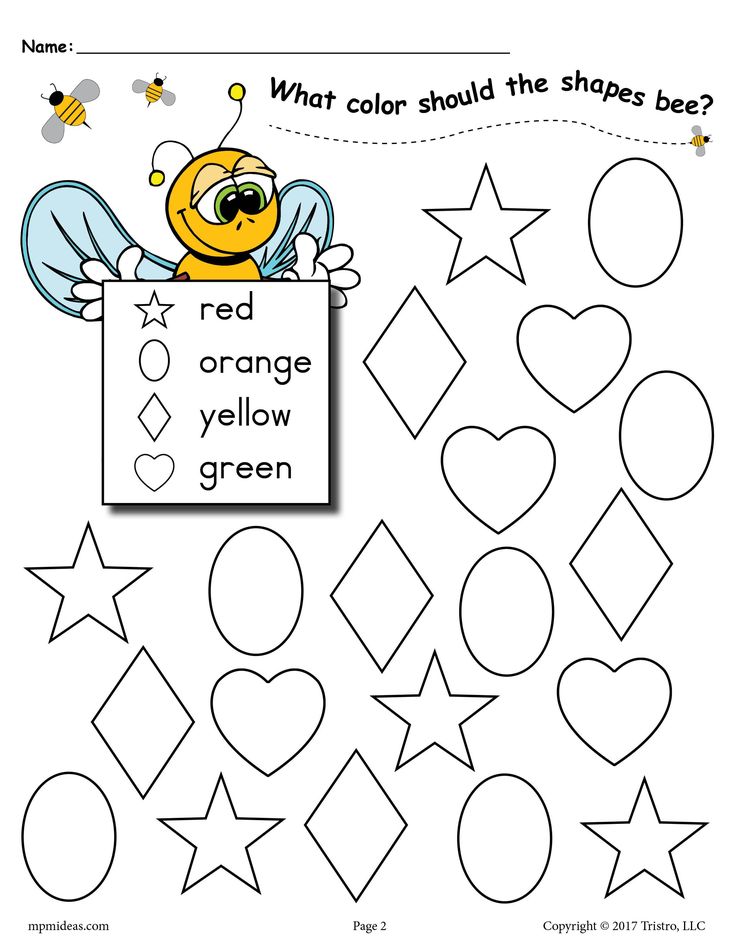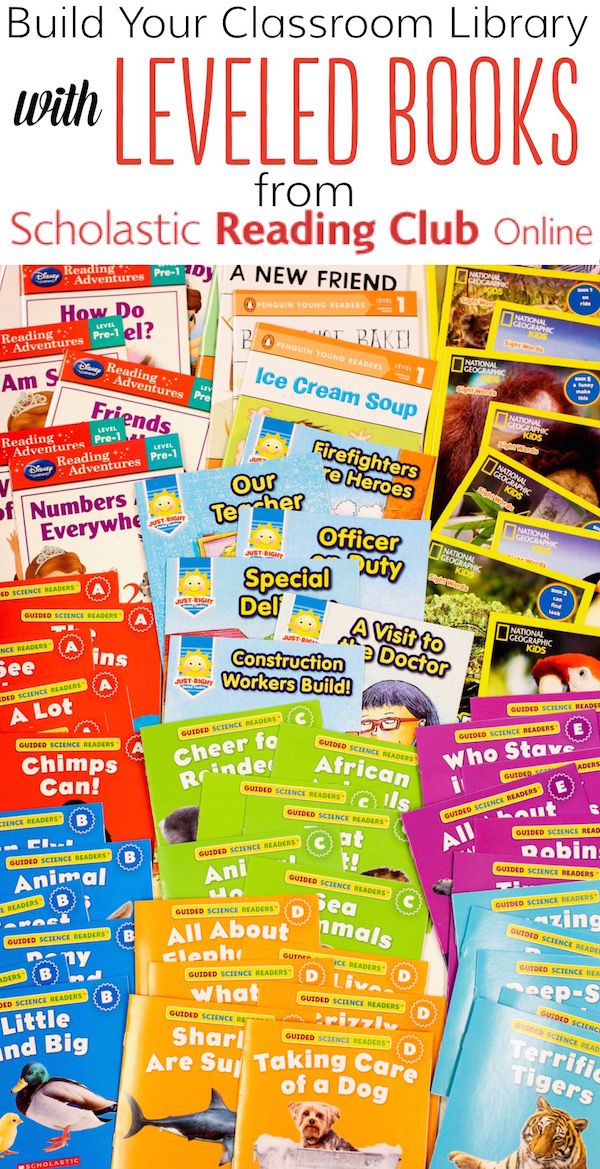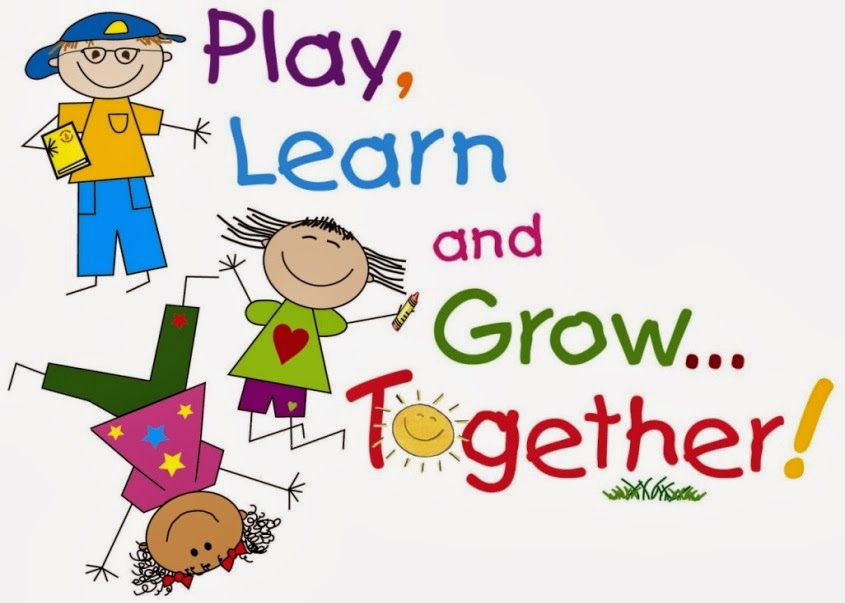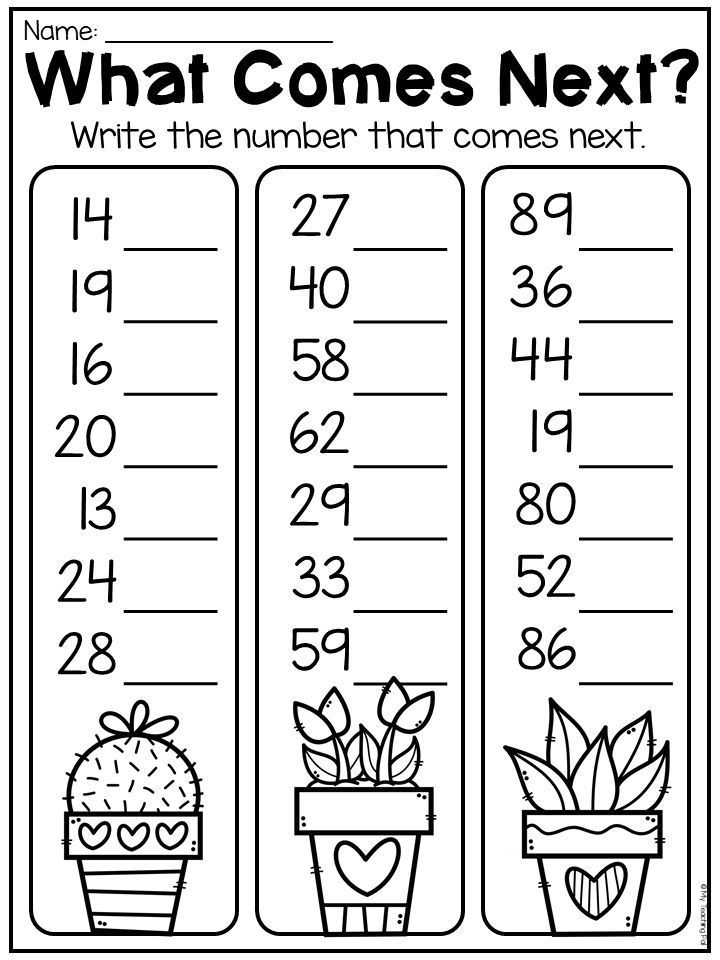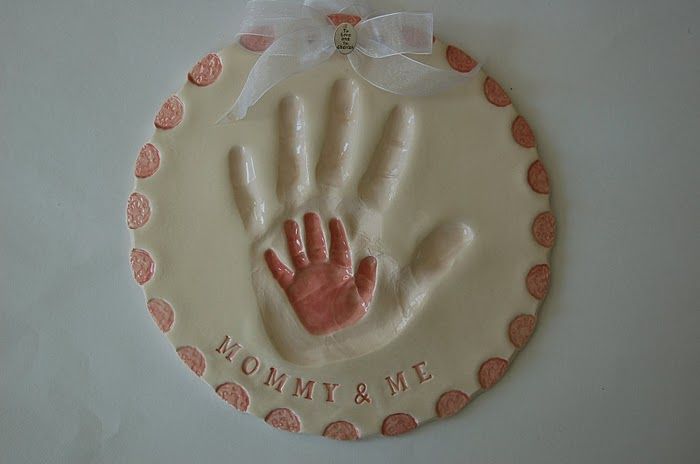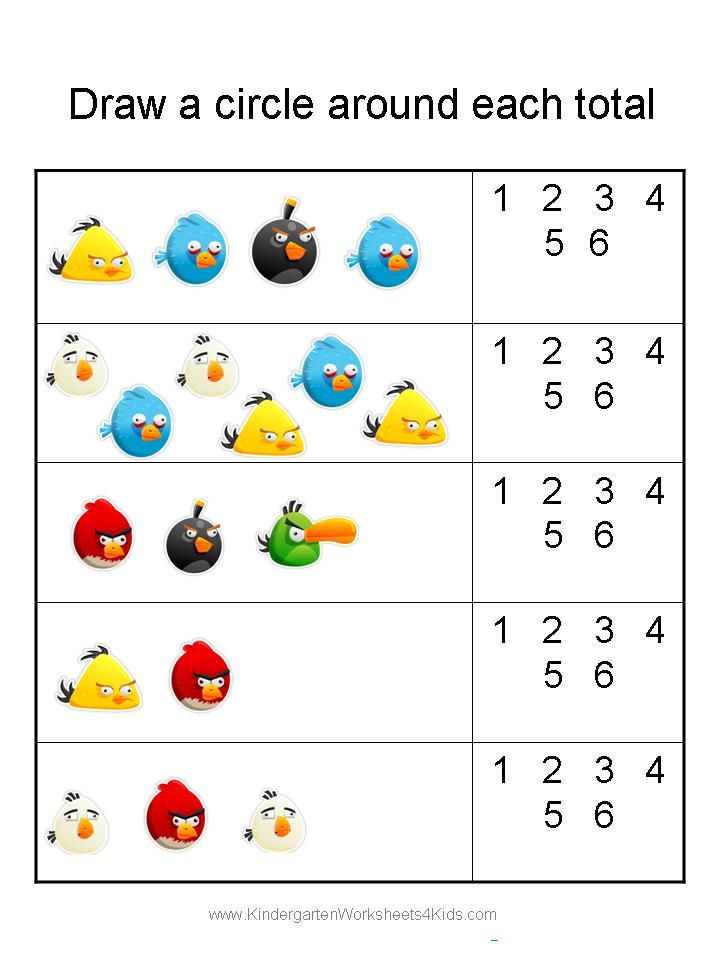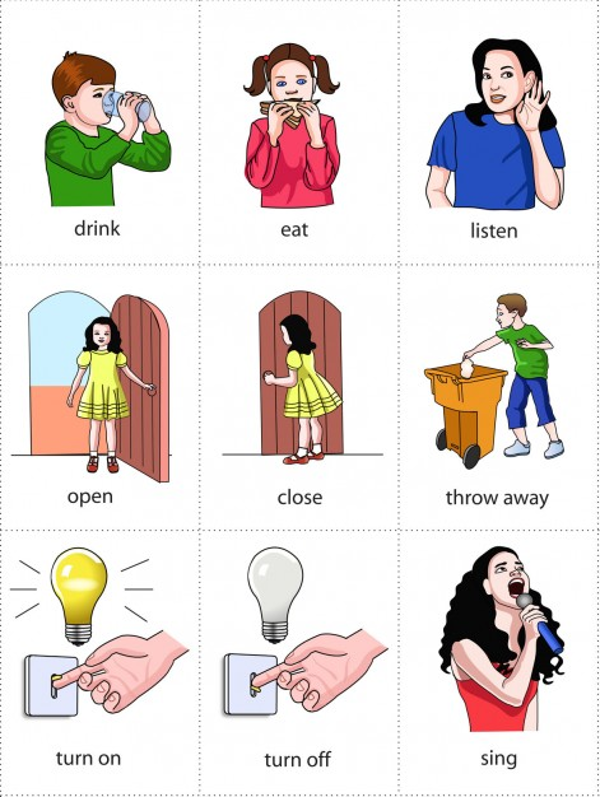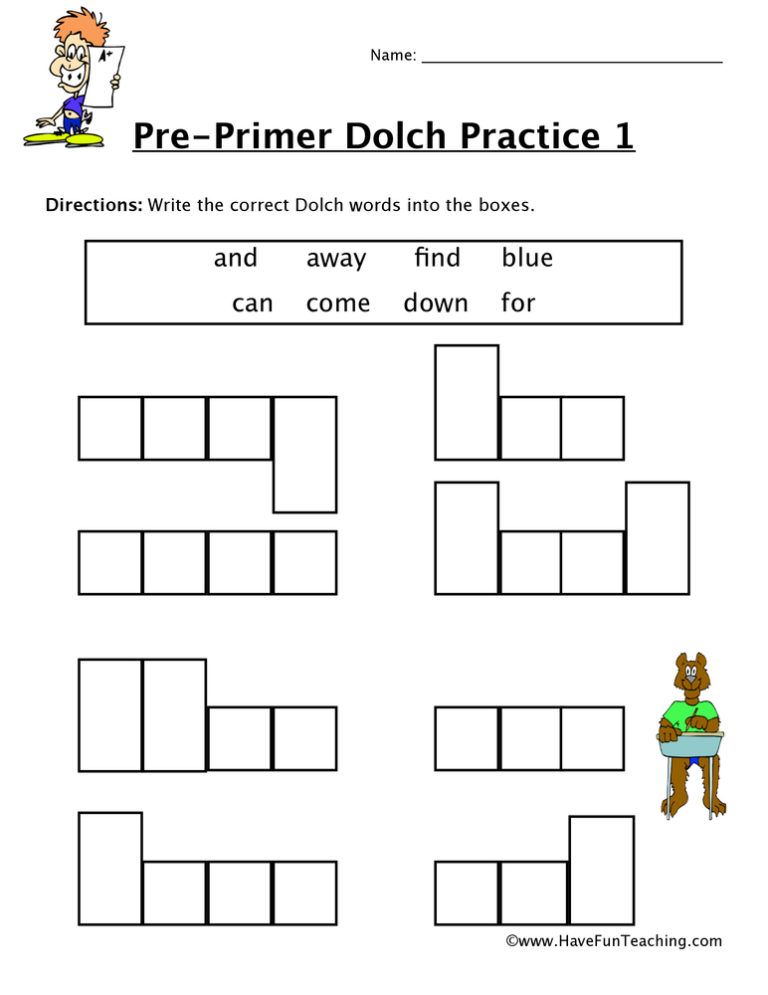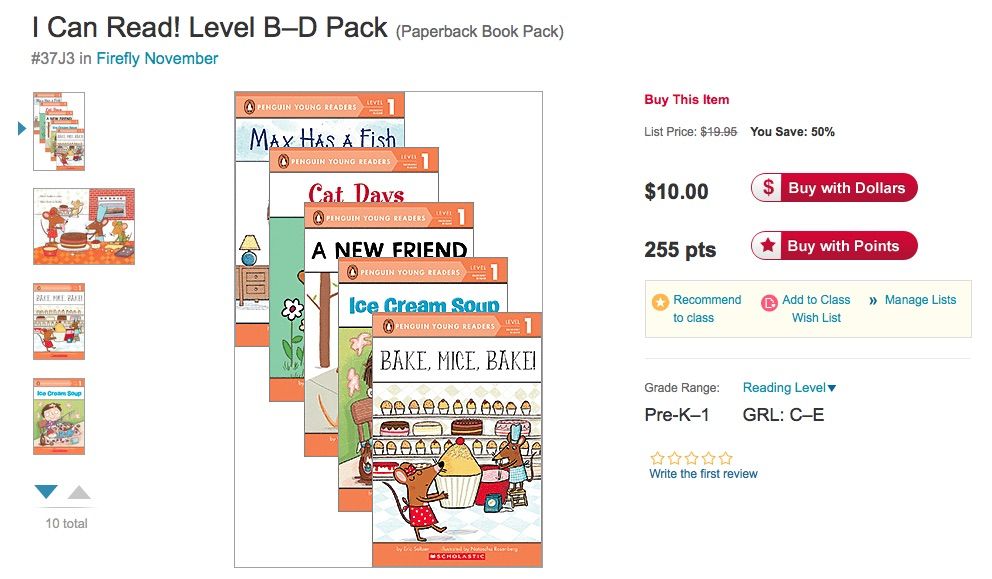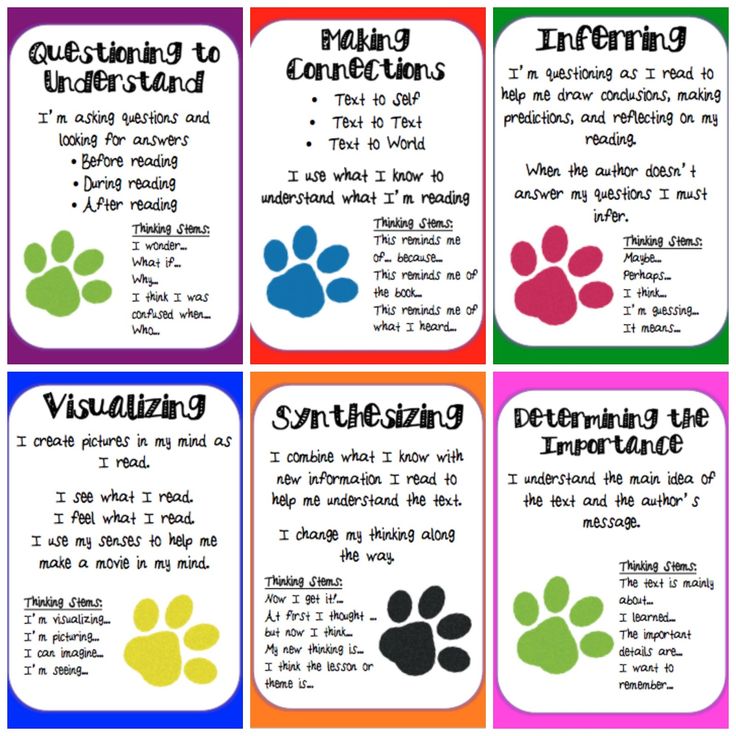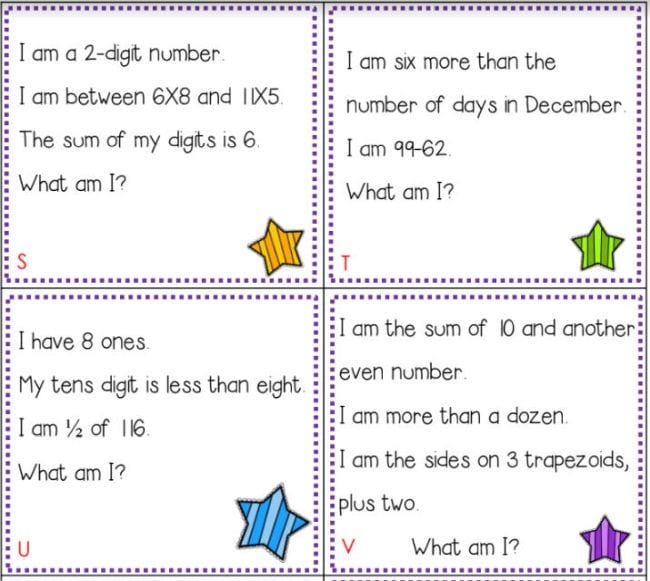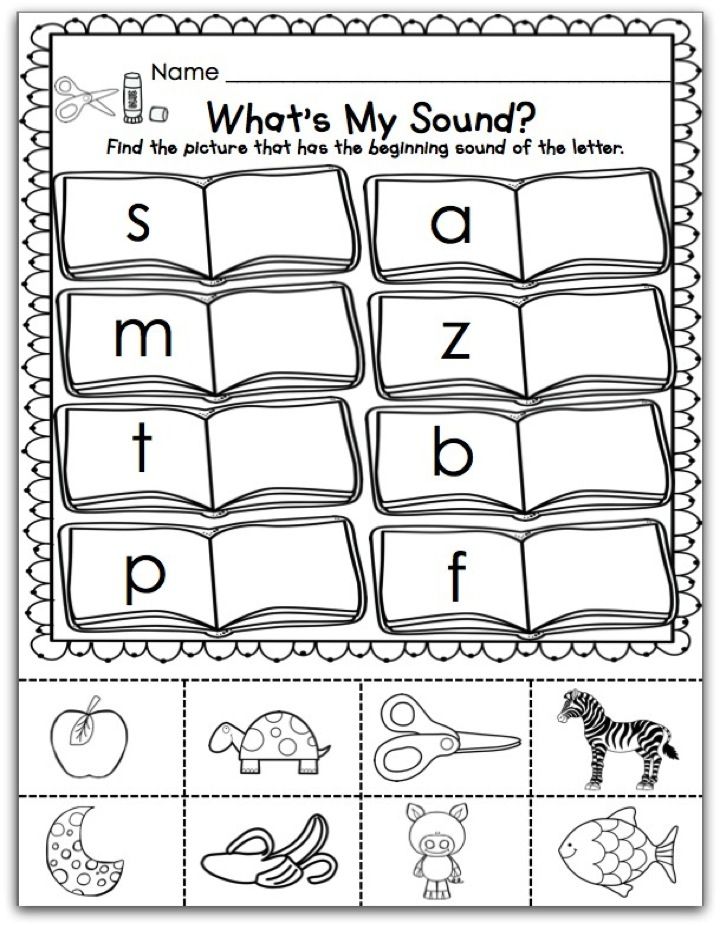Colors and shapes activities for preschoolers
Colors and Shapes Activities For Preschoolers
Have a look at the Best Colors and Shapes Activities for preschoolers to figure out how to teach shapes to your kids. These ideas are perfect for toddlers and preschoolers . Not only will they be working on basic preschool shapes they will also work on early math skills and even learn preschool colors too. Don’t forget to add this to your Preschool Shapes Theme Week. Did you know that preschool shapes recognition is an early math skill? You also may be wondering how to teach basic shapes to preschoolers or toddlers and what shapes preschoolers should learn. The shapes for toddlers to learn are: Star, Square, Triangle, Circle, Heart, Rectangle, Diamond and Oval. This page will be updated constantly to add more shapes activities. This list of Shapes themed toddler activities as well as preschool activities constantly make a reappearance in our home.
The Best Preschool Shapes Activities
-
- Shapes Activities through a 4 year olds eyes Check out two of my daughters favorite shapes activities in her new YouTube video… have your child learn along with her.
- Shapes Activities through a 4 year olds eyes Check out two of my daughters favorite shapes activities in her new YouTube video… have your child learn along with her.
Don’t forget to follow our New YouTube Channel for kids.
-
Preschool Shapes Matching Activity
This sticky shapes activity is a shapes sorting activity. The contact paper removes the need for glue and makes it easier for a toddler. This learning shapes and colors for toddler Printable activity looks as pretty as it is fun. My toddler had a blast placing the small stars in the big star.
-
Preschool Shapes Math Hunt Sensory Bin
This puzzle shapes hunt activity works wonderfully with any puzzle you have at home. Kids will learn their shapes through a sensory experience. The Shapes sensory bin can be made harder by having your child close their eyes and feeling the shape. My toddler was impressed by my preschool shapes game. -
Toddler Shapes Activity Fishing
This shapes fishing activity is a fun shapes water play activity.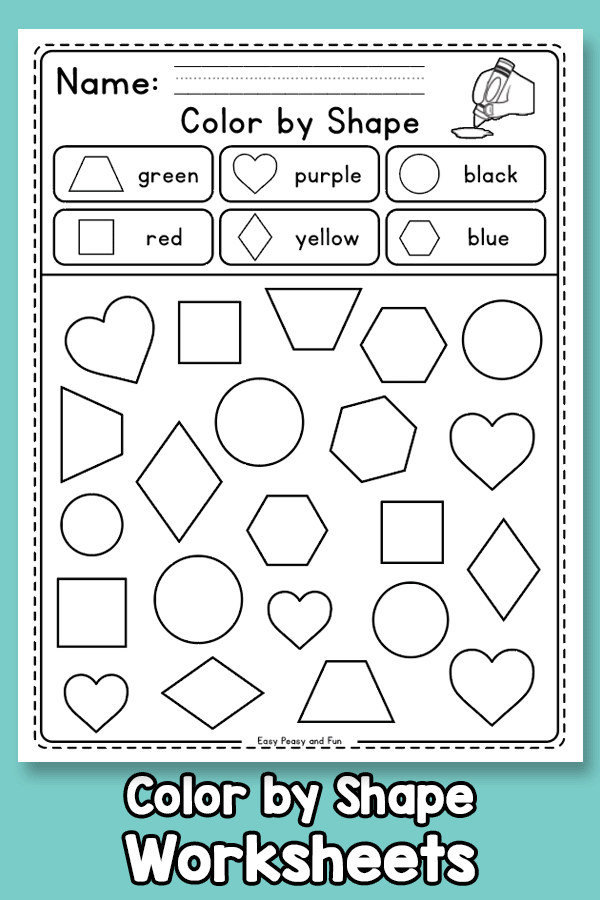 Toddlers and preschoolers will use their fine motor skills to catch the shapes. They can then sort them in the muffin tin.
Toddlers and preschoolers will use their fine motor skills to catch the shapes. They can then sort them in the muffin tin. -
Shapes Cutting
This activity is coming soon and will be added asap. -
Preschool Shapes Paint Resist Activity
We love to do contact paper resist activities. We especially loved this shapes painting resist activity because of how beautiful the pictures turned out and how defined each shape was. -
12 Preschool Shapes Sensory Bins from around the web
We love sensory bins in our home and these 12 shapes sensory bins from around the web give you many different options on teaching your child shapes through sensory exploration. -
Jelly Beans Color and Preschool Shapes Matching
Who can resist colorful jelly beans play? This activity works on shape and color recognition. -
Shapes Fine Motor Activity
This activity is a little more advanced and works well for older preschoolers and elementary grade schoolers.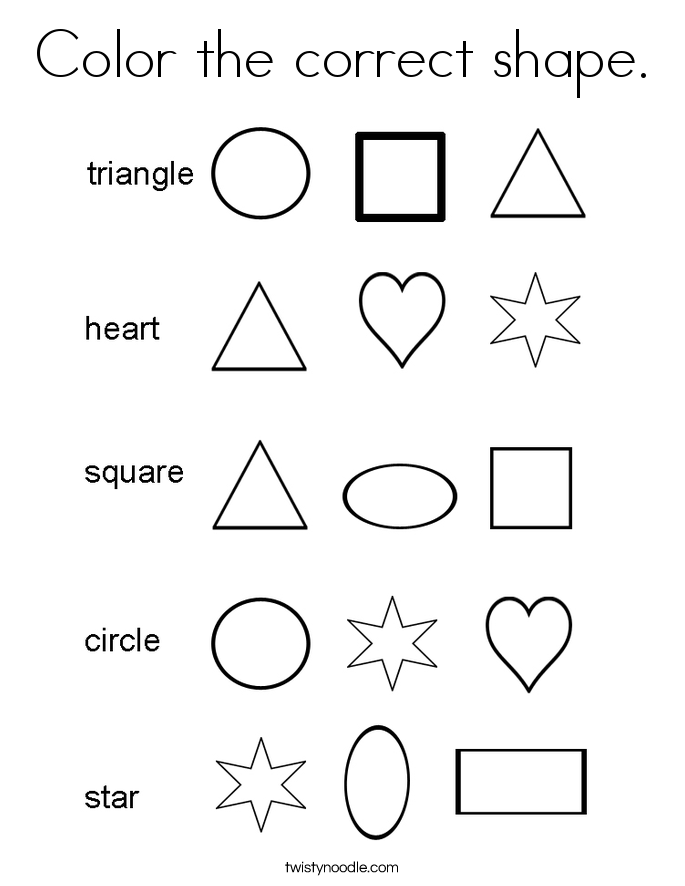 I also enjoyed sewing and weaving with the kids. You can work on color recognition too.
I also enjoyed sewing and weaving with the kids. You can work on color recognition too. -
Create a Preschool Shapes Stamp
-
Make a Shapes Canvas Painting
This activity and project works great for Valentine’s Day, shape recognition and even name recognition. There are so many possibilities and the results are the most beautiful painting that your child can be proud of. - Do A Dot Hearts Printable Preschool Shapes Activity
- Bingo Colors Printable Game These were definitely the best color and shapes activities for my preschooler!
Favorite Preschool Shapes Activities, Toys and Materials:
Please note that I will be adding more shapes themed activities here in the future so remember to bookmark this page.
Don’t forget to check out these awesome preschool printable letter crafts too.
Preschool shapes activities
70+ Shape and Color Activities for Toddlers Preschool and Kindergarten
Table of Contents
Shape and color activities for toddlers and for kids are one of my absolute favorite activities to bring forth!
They are just so much fun and filled with learning fun!
Learning about new colors each day can be really fun!
You can literally create shapes out of colored paper and call it a day!
Neat, right?
Related: Looking for
Fine Motor Skills Activities? These are our favorite!
I wanted to include a big list for you to go by if you ever were interested in the best way to bring forth fun and engaging colorful activities that also may incorporate shape learning as well!
Of course, some of these activities will only be about primary colors, color mixing, different colors and others will only be about shapes but some will definitely include both simultaneously.
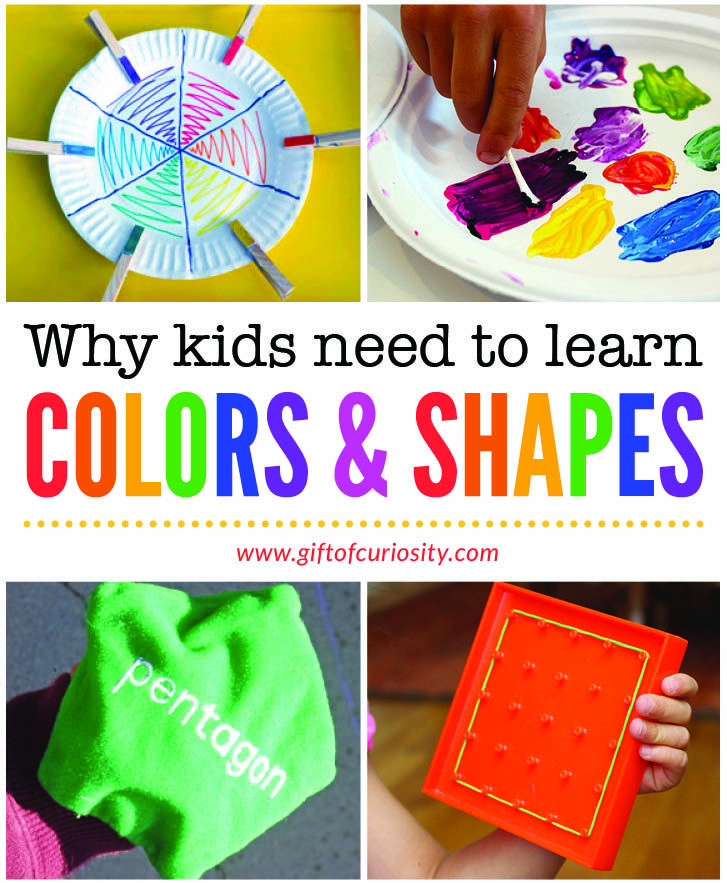
Shapes and Color recognition are a wonderful lesson that can even be included in different themes throughout the year.
For example, around Valentines Day we love to learn about the colors red, pink, white and talk about the shape of a heart.
We may even include a bit of sensory play to create a fun color activity that is hands-on for young children.
Add some colorful pom poms into sensory bottles or a sensory bin to create a fun activity for your preschool classroom.
On Christmas Day, instead of working on all the colors of the rainbow, we like to include the colors green, red and gold and talk about the star shape!
Easy activities that incorporate creative ways to go about different seasons and themed activities make learning about color objects a lot of fun.
There are many fun ways to get creative with learning about shapes and colors throughout the different seasons of the year.
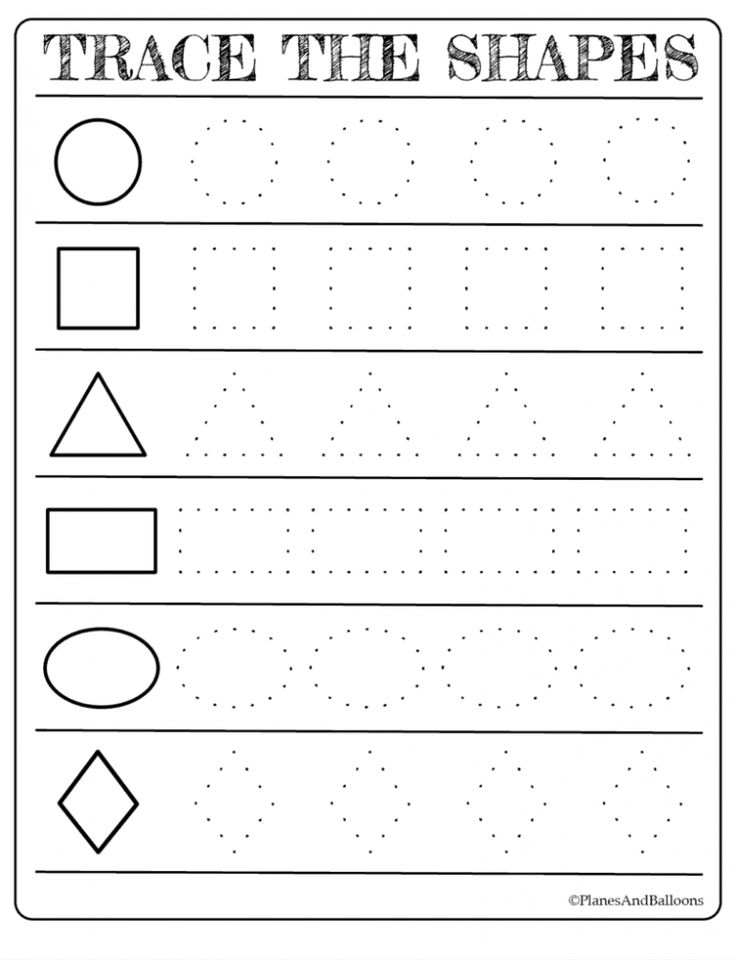
Get this Toddlers Colors Printable Free with Preschool Themes
I’ll be sharing below color and shape ideas in the following order:
Color Activities for Toddlers
Preschool Color Activities
Color Activities for Kindergarten
Shape Activities for Toddlers
Preschool Shape Activities
Shape Activities for Kindergarten
And, you will see some shape activities in the color category – colorful shapes.
You may also see color activities in the shapes category – shapes and colors.
Matching Color Activities and More (Tap Below)
How do you make learning colors fun?
Learning colors doesn’t have to be done with only a simple worksheet.
You can make color learning fun with simple play to learn activities!
The basic question asked often is, “How to teach a two year old colors?”
There are two learning colors games for toddlers I want to talk about right now:
Color learning for kids can look something like filling a bin up with a small amount of water and adding a bit of food coloring into it.

A toddler learning colors can play with the water and you can talk about that color you added in.
Not only is the toddler learning about the colors, they are playing while learning.
Kids painting games are also a fun way to learn about colors.
Painting games for kids can look like painting your hand in the color green and then stamping it onto a paper.
This is a very simple way on how to teach colors to little ones because it is fun, easy and effective.
When do toddlers learn colors?
Toddlers are learning about the world around them every single day.
Colors are everywhere and most children are able to see them and so if you point at something and show them the colors they will absorb that knowledge and in turn grow learning what you are teaching them! 🙂
Every child is different but toddlers are learning everyday and colors is one of those categories they are learning about.
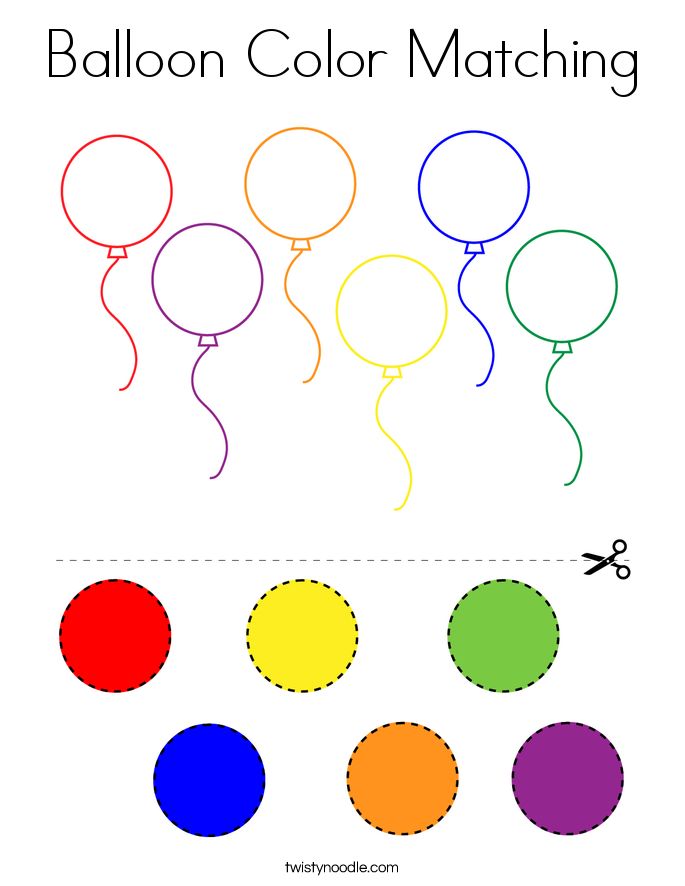 🙂
🙂
Color activities for preschoolers
Here are some fun ideas we have tried that incorporated preschool color activities:
Rainbow Fish Craft
Leak Proof Bag Color Matching Activity
Paper Plate Jellyfish
Ice Cream Craft with Cotton Pads
A lot of these toddler colors game activities were so much fun and not only about colors. They were playing, creating and learning as well!
Related: For even more simple color activities, check out these awesome sensory activities!
How do I teach my 5 year old colors?
Color activities for kindergarten can be easily brought forth with a few manipulatives. Here are some of our past ideas that we have done that helped my littles learn about colors:
Kindergarten Busy Book
Color Matching Activity
DIY Sidewalk Chalk Paint
Kindergarteners are also learning to write.
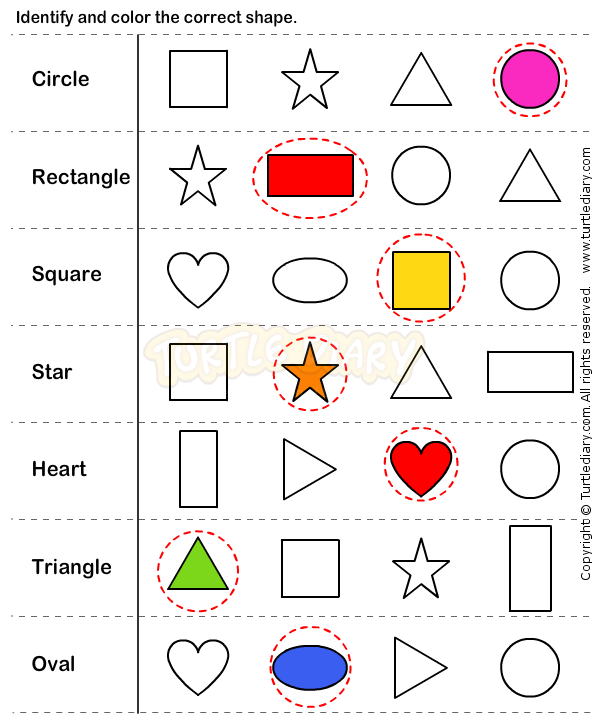
They can practice writing the color names in the same color of that color name.
How do we celebrate Colour day?
I didn’t even know color day was a thing! 😀
What a fun way to incorporate a rainbow of colors on a specific day of the year!
If you are wanting to celebrate color day, a great way to bring forth learning colours for kids is to set up easy and effective activities to learn colors.
Learning the colours of the different flags of the world, or games on colours such as board games or interactive games are other fun ways to learn about colors in a group setting.
Learning color for kids can be fun!
With the right direction and guidance, you will be learning colors in a fun way!
What color should I teach first?
There is no right or wrong way to teach colors.
A fun way to teach colors is by seasons.
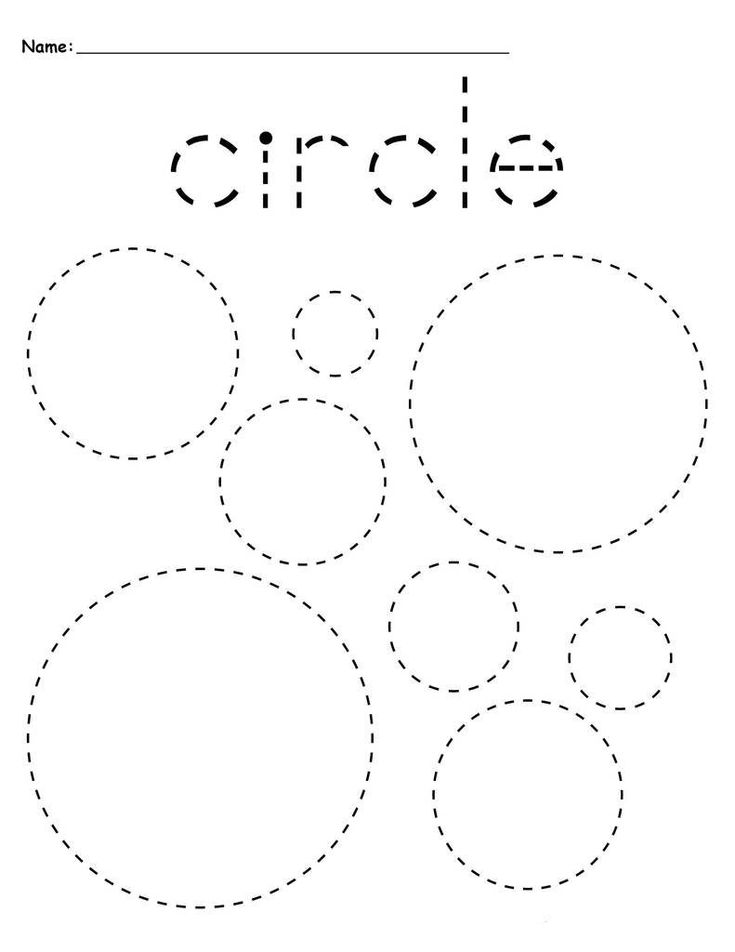
For example, next time that it is St. Patrick’s Day, you may want to bring forth fun activities that involve the holiday.
The colors green and gold come to mind and this can be a wonderful time to teach about green and gold.
Sticker sorting is a great opportunity to learn the names of the colors and rainbow colors on stickers for the preschool years!
Add a sheet of paper next to the sticker activity to write out the color name and practice learning colors.
Related: Looking for a fun toddler color sort printable? This one is SO much fun!
How do I learn colors?
I will be sharing a list below of different methods on how you can teach and/or learn colors!
Learning colors activities can be fun and doesn’t have to be boring!
With a little help and direction from this post, you will be learning and teaching about colours in a fun way in no time!
Some ideas on color games are:
use colorful lego pieces to learn about the concept of colors
use this brown bear free booklet to learn about colors!
point to the different colors in children’s books
create a fun game of pointing to the different color at the grocery store
point to all of the yellow cars one day and then on a different day point to a different colored car.
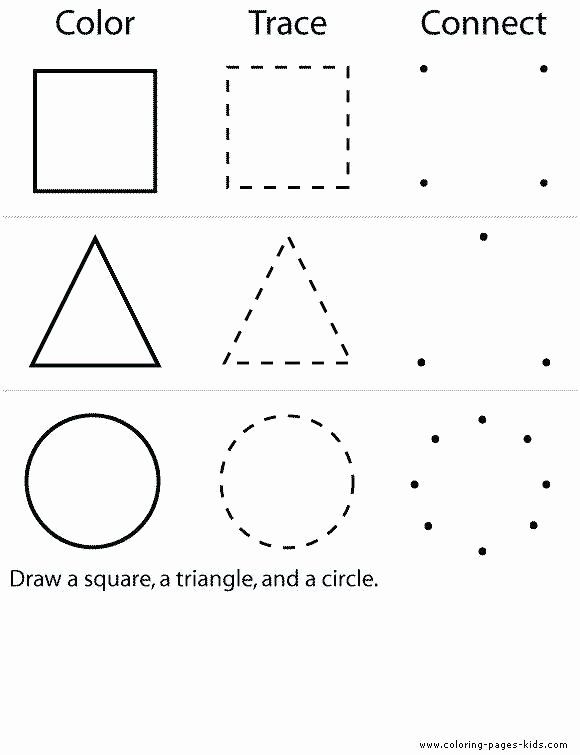
use ice cube trays to create colorful ice cubes held on by popsicle sticks.
Related: Looking for shape worksheets for kindergarten? Check out our Kindergarten Busy Book!
How do you introduce shapes to preschoolers?
Learning about shapes is so much fun!
Some ideas on how you can teach about shapes are:
By introducing fun hands on activities
Matching shapes activities
Shape art lesson
Kids shapes learning by bringing forth a sensory bin
Games of shapes or games with shapes
Shapes in nature lesson plan
Shape books for preschool
Group activities for preschoolers about learning shapes
Making shapes with pipe cleaners
These are just some of many ways you can teach about shapes to preschoolers! 🙂
How do preschoolers teach colors and shapes?
Preschoolers can learn about colors and shapes by learning through a fun shapes to learn activity.
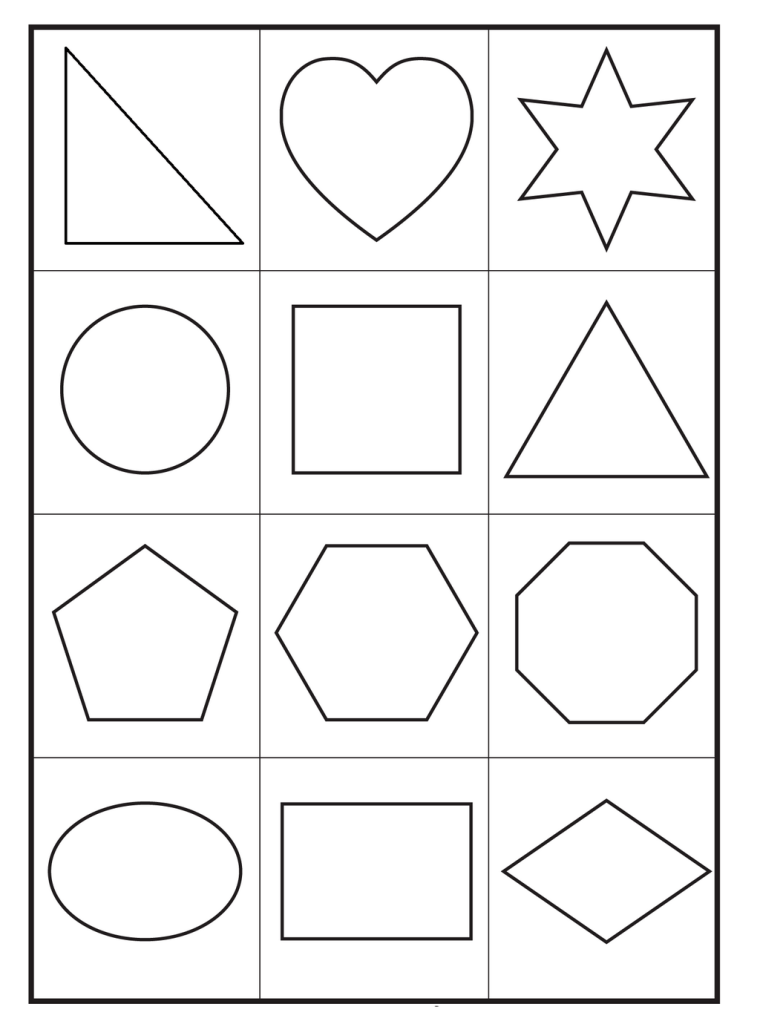
For example: We tried this shape activity that was oodles of fun!
You only need two items: a poster board and construction paper.
Not only did my preschooler learn about shapes, but she also learned about colors too!
What are good activities for preschoolers?
A question I see often is, “How to introduce shapes to preschoolers?”
There are many fun ways you can teach about shapes to preschoolers.
I like to keep it simple like our construction paper poster board shape matching activity!
If you are interested in a preschool busy book, our busy book includes a shape matching page that will also teach your little about shapes in a fun way!
It is a wonderful busy book that can be taken on the go and it is one of our most popular items.
Check out our Preschool Activity Binder!
How do you introduce square shapes to preschoolers?
You can bring forth a fun set of shape crafts for preschool.
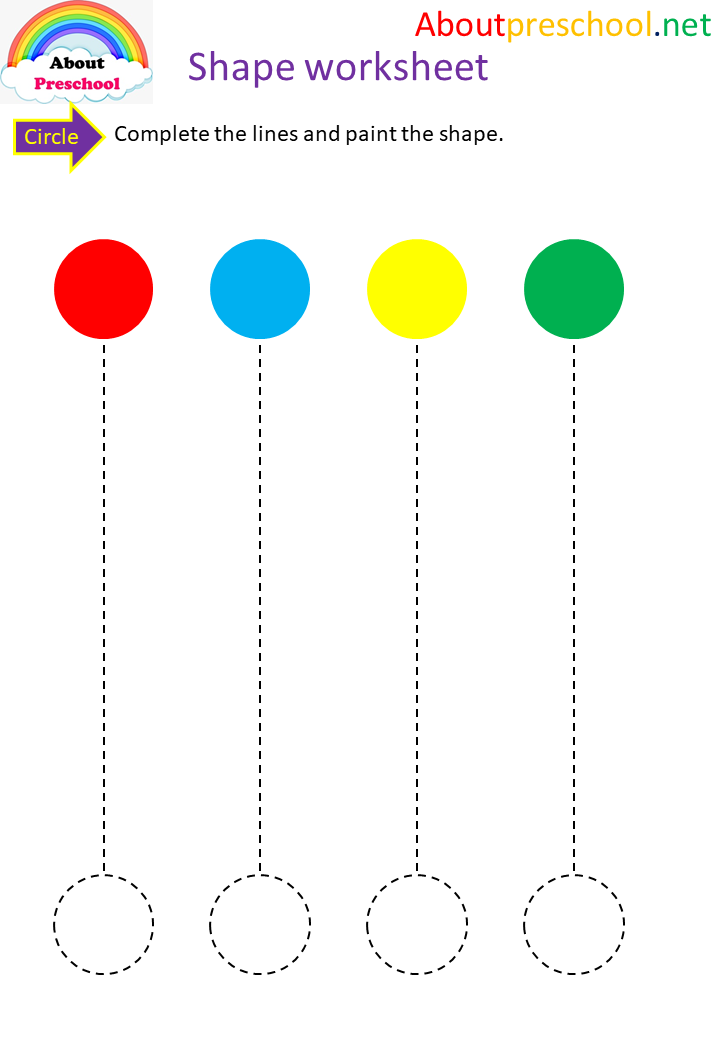
For example, Cut out different square shapes from construction paper and talk about the different square sizes and the square shape!
Elaborate on how the square has four sides.
Another fun way to talk about the square shape is to try stick shapes.
Grab four popsicle sticks and create a square using four craft sticks!
What other fun shape ideas can you think of incorporating to learn about the square shape?
What shapes should preschoolers know?
I like to bring forth the four basic shapes first:
Circle
Square
Triangle
Rectangle
These are the first four that we learn in our home and then we work on any other shapes once these have been mastered.
What about you? Is there a specific set of shapes you like to go by first? Leave me a comment below letting me know!
Related: Looking for Toddlers lesson plans, check out our Toddler Busy Book!
70+ Shape Activities for Toddlers, Preschool and Kindergarten
Color Activities for Toddlers
Fine Motor Color Sorting Activity – Active Littles
Color Matching Caterpillar – Fantastic Fun and Learning
Pom Pom Color Tray – Busy Toddler
Paper Roll Color Match Activity – Busy Toddler
Heart Color Hunt – Toddler Approved
Learning Colors with Rainbow Bears – Simple Fun for Kids
Gross Motor Color Game – Simple Fun for Kids
Colors Busy Bag – The Chaos and the Clutter
Color Matching Lid Drop Toddler Activity – Raising Dragons
Easy DIY Color Activity – Active Littles
Rainbow Rice DIY – Active Littles
Water Play Color Activity – Active Littles
Monster Color Match Activity – Active Littles
Color Activities for Preschool
Squishy Bag Color Activity + Free Printable – Active Littles
Easy Color Matching Fish Activity – Active Littles
Simple Feather Color Matching Activity – Active Littles
Color Sorting Sensory Bin – The Resourceful Mama
Colorful Pre-Writing Activity – Days with Grey
An easy way to get Preschoolers to learn colors – Coffee Cups and Crayons
Paint Chip Color Matching – Play Teach Repeat
Muffin Tin Color Sort – Happy Toddler Playtime
Color Play on Mirror – Little Bins for Little Hands
Toilet Paper Crayons – The Best Ideas for Kids
Color and Texture Sensory Bag – Active Littles
Color Match Ice Cream Cone – Active Littles
Color Activities for Kindergarten
Pumpkin Seed Art – Fun a Day
Duplo Color Match – Happy Tot Shelf
Color Hunt – Raising Dragons
Playful Way to Learn about Colors – Little Pine Learners
Watercolor Painted Seashells – Hello Wonderful
Exploring Colors with Baking Soda and Water – Buggy and Buddy
Color Matching Activity – Active Littles
Color Match Leak Proof Bag – Active Littles
Pipe Cleaner Color Matching Activity – Active Littles
Teaching Colors Printable – Active Littles
Ice Cream Color Activity – Active Littles
Gold Playdough using Watercolors – Active Littles
Shape Activities for Toddlers
Play to Learn Shape Cards – Active Littles
Sponge Shape Paint Activity – Active Littles
Easy Shape Sorting Activity – Active Littles
Triangle Activity for Toddlers – Teaching 2 and 3 Year Olds
Shape, Hop, Toss Shape Gross Motor Play – Learn Play Imagine
Giant Shapes Puzzle – Play Teach Repeat
Shape Sorting Suncatcher – Happy Tot Shelf
Matching Shapes – Raising Dragons
Sticker Shapes – Busy Toddler
Sorting Shapes Sensory Bin – Learning 4 Kids
Shapes Parking Lot – Happy Toddler Playtime
Shape Activities for Preschool
Shape Printable Activities Freebie (Preschool Shape Worksheets) – Active Littles
Simple Color and Shape Cardboard Activity – Active Littles
DIY Shape Sensory Bags + Free Printable – Active Littles
Post it Notes Shape Puzzles – Happily Ever Mom
Shape Match Preschool Game – Days with Grey
Shape Art – Busy Toddler
Making Crayon Shapes – Toddler Approved
Exploring Shape Symmetry – No Time for Flashcards
3D Wooden Puzzles – Rhythms of Play
Sticky Tape Shapes – Happy Toddler Playtime
DIY Shape Threading Fine Motor Activity – Active Littles
Shape Activities for Kindergarten
Shape Matching Printable Freebie – Active Littles
Create Birds with Shapes – Fantastic Fun and Learning
Grape Shapes Activity – Coffee Cups and Crayons
Shape Rocks – Fun a Day
Mystery Shapes Build – Days with Grey
Shape Painting – Messy Little Monsters
Sand Shapes – Gift of Curiosity
Geometric Shapes Math Activity – Little Bins for Little Hands
Shapes Memory Game – Hello Wonderful
Shape Necklace – Buggy and Buddy
Straw Shapes – Raising Dragons
Floating Shape Dry Erase Marker Experiment – Active Littles
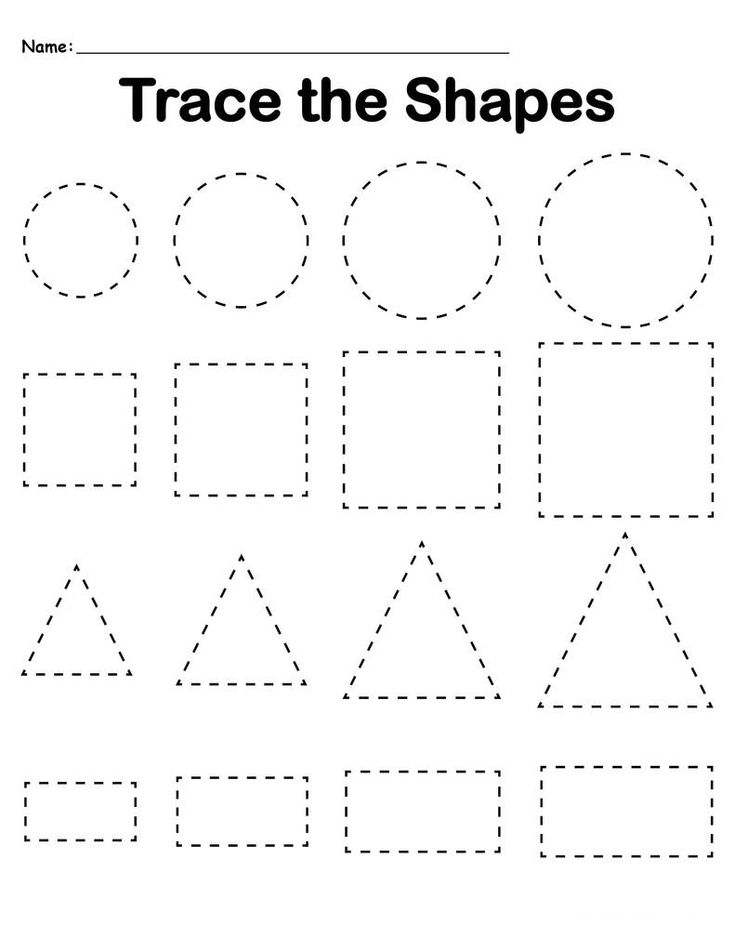
Learning colors: how to teach a child to distinguish colors and shades
It is generally accepted that by the age of three a child should learn to distinguish between primary colors. This skill is an important part of sensory development, it gives the child the opportunity to see the world in a new way. Often, if the baby does not know or confuse colors, parents have concerns about the pace of development of the child. Do I need to worry if the study of colors is not easy for a child? How to teach a child to distinguish colors? You will find answers to these questions in our article.
At what age does a child begin to see colors?
Studies have shown that children begin to perceive colors by 2-3 months. The first colors a child sees are yellow, orange, red, green. At this age, babies can already react differently to their toys of different colors (for example, a red rattle can please a child more than a blue one), look at bright pictures with enthusiasm.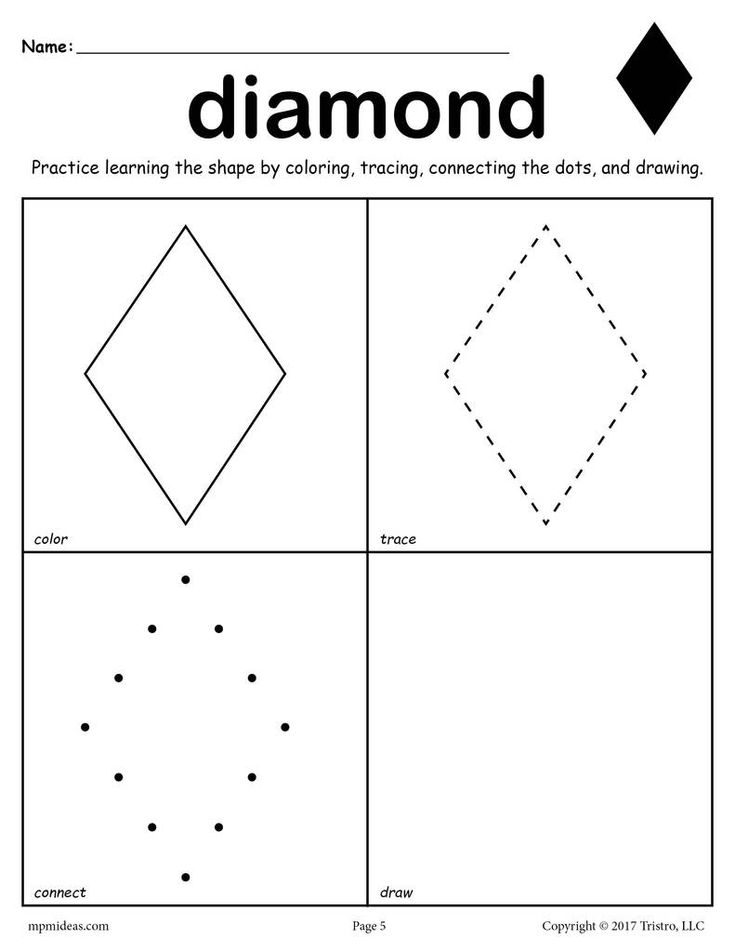 The baby's world quickly acquires colors, but if we talk about the ability to consciously find an object of the right color, then usually it appears in children at the age of one and a half. It is at this age that it is optimal to start learning colors in a playful way. You can voice the names of flowers to a child for up to a year, this will only benefit him. But do not demand too much from the baby, remember that his brain is actively developing, and as soon as the time comes, you will certainly see the results.
The baby's world quickly acquires colors, but if we talk about the ability to consciously find an object of the right color, then usually it appears in children at the age of one and a half. It is at this age that it is optimal to start learning colors in a playful way. You can voice the names of flowers to a child for up to a year, this will only benefit him. But do not demand too much from the baby, remember that his brain is actively developing, and as soon as the time comes, you will certainly see the results.
To see if your child is ready to learn colors by playing with building blocks, ask your child to point to a part that is the same color as yours. If the baby can find objects of the same color, then he is quite ready to memorize the names of colors.
Learning colors in everyday life
Children get most of their knowledge about the world in everyday life: communicating with adults and peers, observing nature, playing.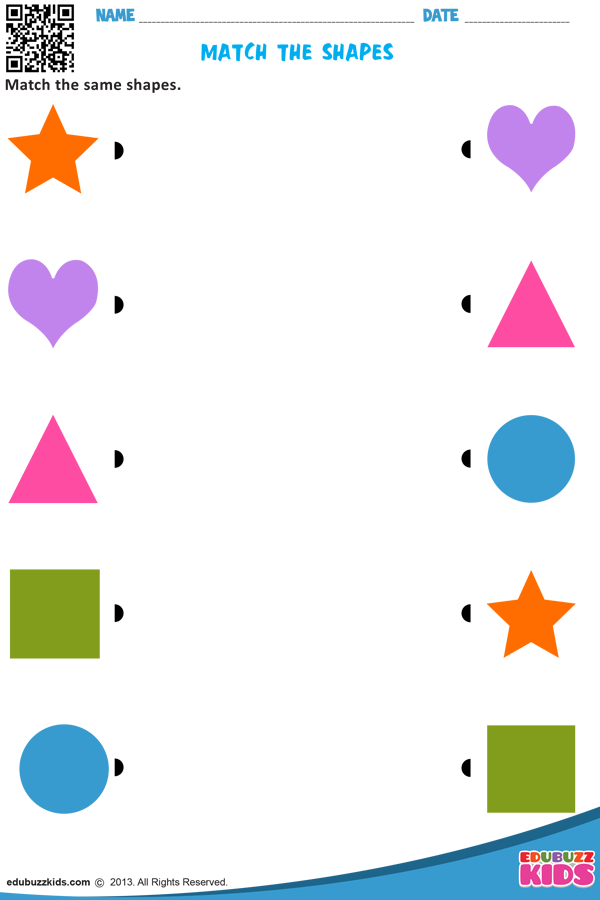 The study of flowers is no exception. Sometimes a child does not need to do special exercises to learn to recognize colors. For this, it is enough that he hears the name of the color and associates it with a specific thing. During daily activities, voice for the child what color the objects are around. Whether you are drawing, playing with blocks, looking at cars in the yard, reading, swimming, eating, dressing - in each of these situations, you can gently teach your child to distinguish colors.
The study of flowers is no exception. Sometimes a child does not need to do special exercises to learn to recognize colors. For this, it is enough that he hears the name of the color and associates it with a specific thing. During daily activities, voice for the child what color the objects are around. Whether you are drawing, playing with blocks, looking at cars in the yard, reading, swimming, eating, dressing - in each of these situations, you can gently teach your child to distinguish colors.
It is important that the study of colors does not turn into torture. You should not constantly test the child's knowledge by asking him which color is which. Soon the baby may just start to ignore you. “Let's paint the sun yellow!”, “What a delicious green cucumber!”, “Oh, where did the blue cube go? Here he is!" are examples of how you can gently help your child remember colors.
Games for learning colors and their shades
In order to get your baby interested in learning colors or to reinforce the knowledge they already have, you can offer your child to play special “color” games.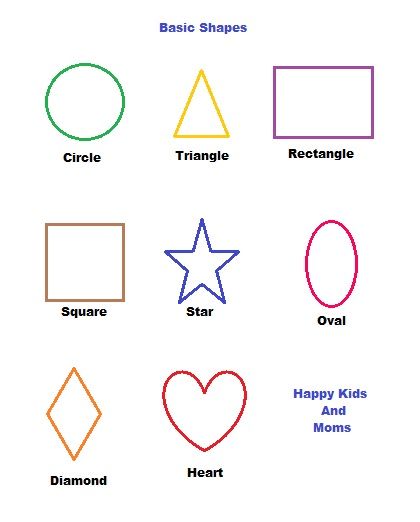
Color Sorting
Sorting games are designed to help children learn to group objects by color. Any materials at hand can be items for sorting: toys, covers, designer parts, cubes, buttons, cereals, pencils, etc. You can organize the game in various ways:
You can come up with as many options for sorting by color, it all depends on your imagination. So that the child does not lose interest in the task, connect the plot of the game with his favorite characters, toys (for example, a cat will eat from a yellow bowl, and a baby elephant from a red one, etc.).
Match a Pair
Help your child learn colors with the Match a Pair series. Ask your child to find a petal for a bug, a pot for a flower, a roof for a house, etc. You can present the baby with a deliberately wrong option and ask to correct the mistakes.
Pick up a patch
Show the child the picture with the missing details.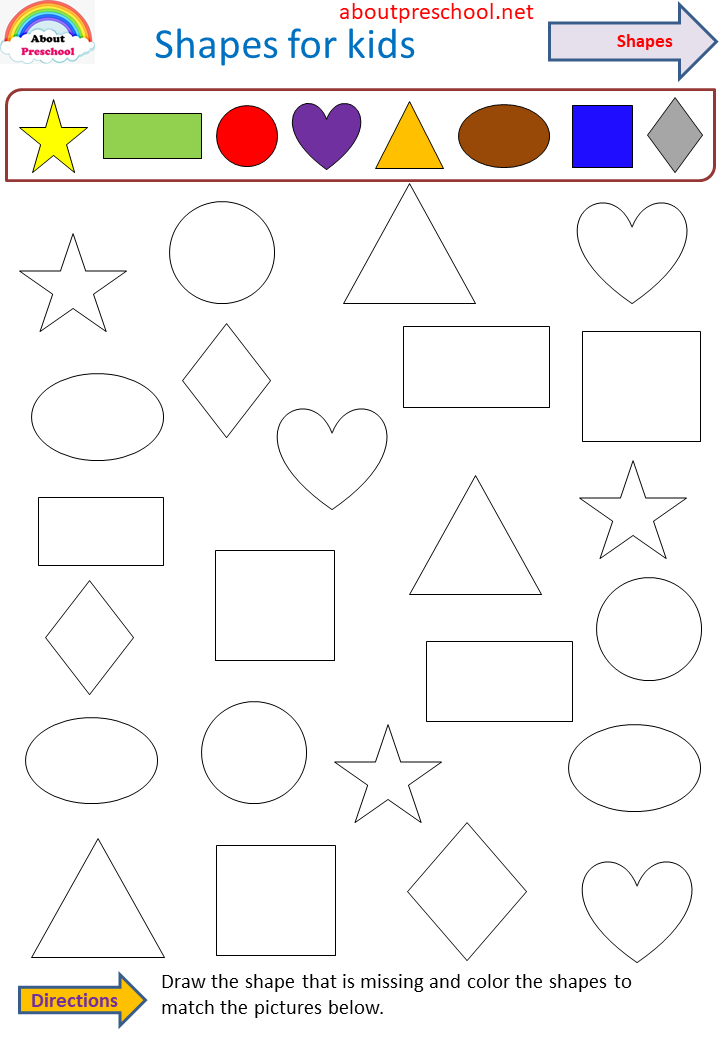 Ask him to fill in the gaps (this can be done with plasticine, pom-poms, caps, cards, etc.).
Ask him to fill in the gaps (this can be done with plasticine, pom-poms, caps, cards, etc.).
Color Lotto
At the age of about one year, children begin to be interested in various lottos. In the color lotto, the task is to collect pictures of the same color on the card.
Colored Sensory Boxes
Create a sensory box for your baby where everything is the same color. During the game, the child will be able not only to remember the color that he sees, but also to develop fine motor skills, tactile sensitivity, thinking, and imagination.
Color days
This is one of the most interesting and popular ways to teach your child to distinguish colors. Its essence is that during the day (or several days) you draw the child's attention to objects of a certain color. For example, on a yellow day, you can dress in yellow clothes, play with yellow toys, draw a yellow chicken. Surrounded by one color, the baby will easily remember it.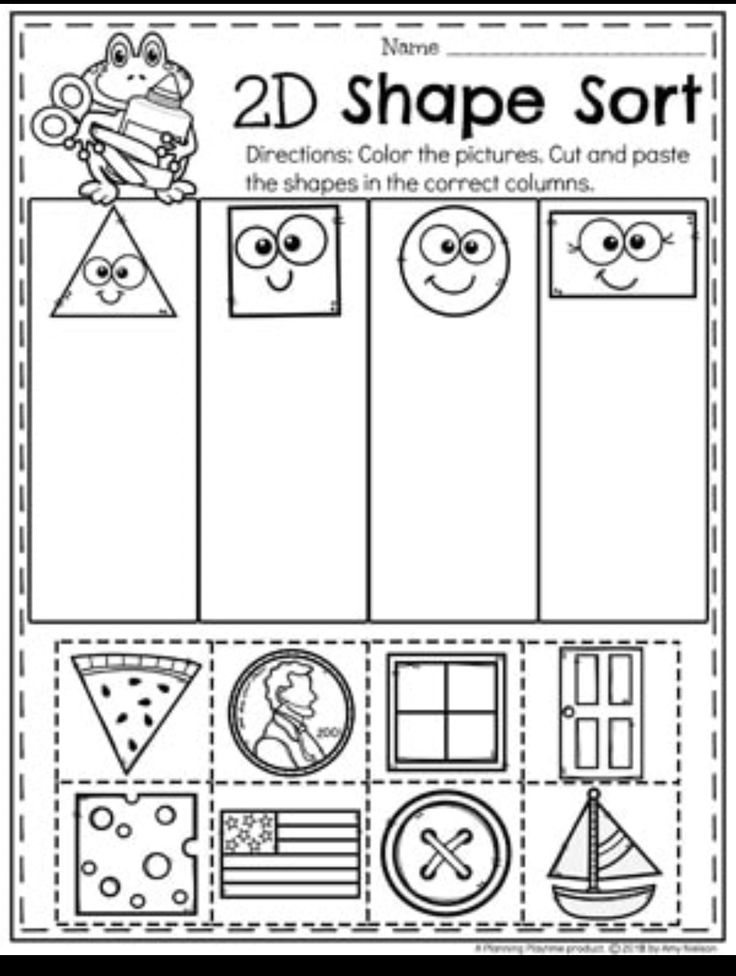
Cards for learning colors
You can learn colors with your child using cards. With the help of Doman's "Colors" cards, you can introduce your baby not only to the main colors, but also to different shades. It is important not to overload the child with unnecessary information about the names of 10 shades of green or red. Learn only those shades whose names you can use in the game and life.
Board games for learning colors
Board games are a great way to learn about colors and consolidate knowledge about them. Currently, the stores offer a wide range of similar games for every taste and budget. Choose a game that suits your child.
Educational cartoons
There are many educational cartoons on the Internet that will help your child memorize colors quickly. Here is one of them:
Educational books
If your little one loves to listen to stories and look at pictures, this is the way for you.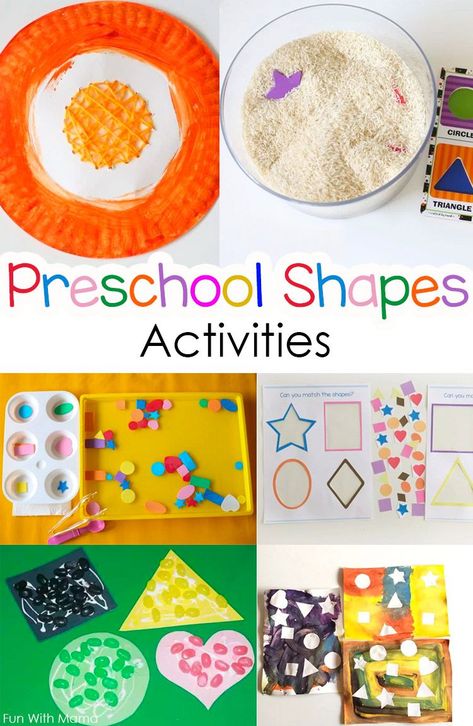 We all remember the wonderful story of V.G. Suteev "Rooster and paints", by S.Ya. Marshak has a whole “Colorful book”. You can also find many educational books that will become your faithful assistants.
We all remember the wonderful story of V.G. Suteev "Rooster and paints", by S.Ya. Marshak has a whole “Colorful book”. You can also find many educational books that will become your faithful assistants.
Conclusions
We have listed for you different color learning games. In order for a child to master the concept of color well, it is worth adhering to a number of principles: do not rush the baby, provide a variety of material for games, discuss what you see.
Conclusion
You can start studying colors from a very early age, the main thing is that it is interesting for the child. It is impossible to specify clear age limits when a child should learn primary colors. This process, like all development, is individual for each baby. The Sozvezdie Development Center has created a Montessori environment for kids, aimed at the comprehensive development of the child. In the "Together with Mom" classes, children in a playful way get acquainted with the concepts of color, shape and size, do thematic creative work.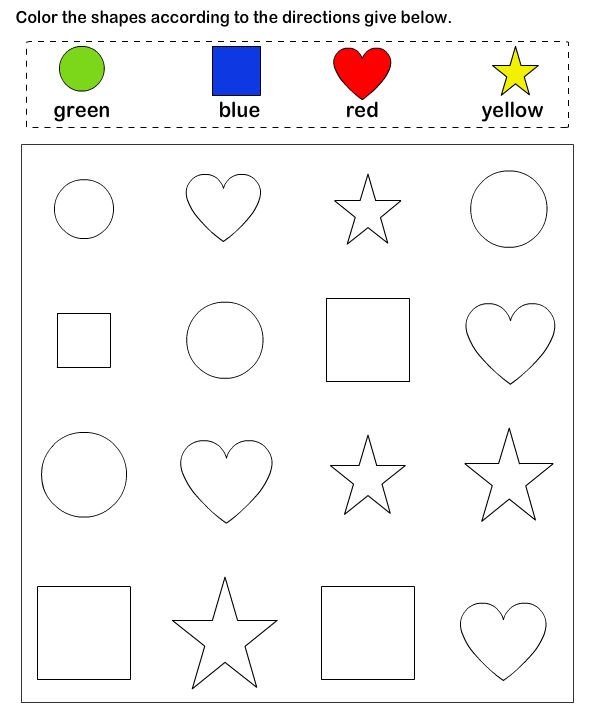 You can learn from our teachers how to interest a child in an activity and how to properly present him with cognitive information. Develop with us!
You can learn from our teachers how to interest a child in an activity and how to properly present him with cognitive information. Develop with us!
Prepared by a Montessori teacher
Sokolova Oksana
Diagnostic tasks to identify children's knowledge of basic colors and shapes, the ability to classify them in accordance with given characteristics and tasks for color and shape discrimination
Tasks for studying the formation of ideas about color in preschoolers.
Task number 1. "Name the color"
Purpose: To explore children's knowledge of primary colors and the ability to verbally designate them.
Equipment: Colored cubes (8 pieces) of primary colors - 2 red, 2 yellow, 2 green, 2 blue.
Conducting the examination (procedure and instructions): Four cubes of different colors are placed in front of the child and asked to show the one in the hands of the experimenter: “Take a cube like mine.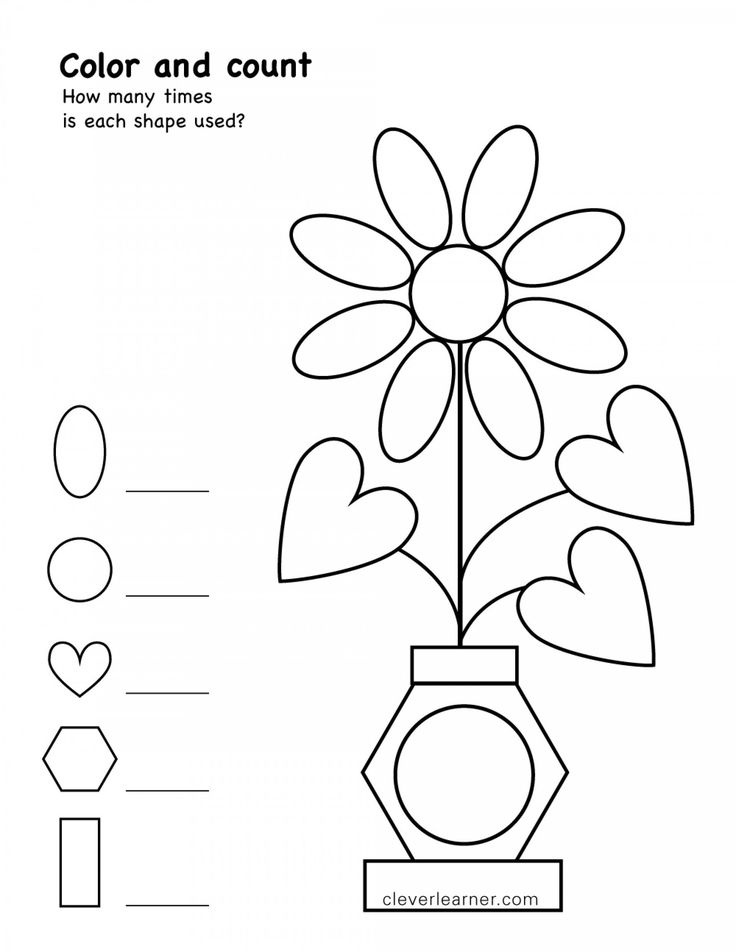 ” Then the experimenter asks to show: "Show me where is red, and now where is yellow, green, blue." Then the experimenter asks the child to name the color of each cube in turn: “What color is this cube?”.
” Then the experimenter asks to show: "Show me where is red, and now where is yellow, green, blue." Then the experimenter asks the child to name the color of each cube in turn: “What color is this cube?”.
Completion score:
- 3 points - the child compares colors, highlights them by word, names the main colors; interested in the end result.
- 2 points - the child compares and highlights the color according to the word; shows interest.
- 1 point - the child compares two colors, but does not highlight the color by the word even after learning; indifferent to the end result.
- 0 points - the child does not distinguish colors even after training.
Task number 2. "Pick up a bow for kittens"
The purpose of the study: to determine the ability to correlate and differentiate colors, knowledge of the names of primary colors.
Equipment: a picture of kittens in multi-colored slippers.
Conducting an examination (procedure and instructions): A picture is placed in front of the child and instructions are given: “Look at the slippers dressed on the paws of kittens; and pick up a bow for each kitten.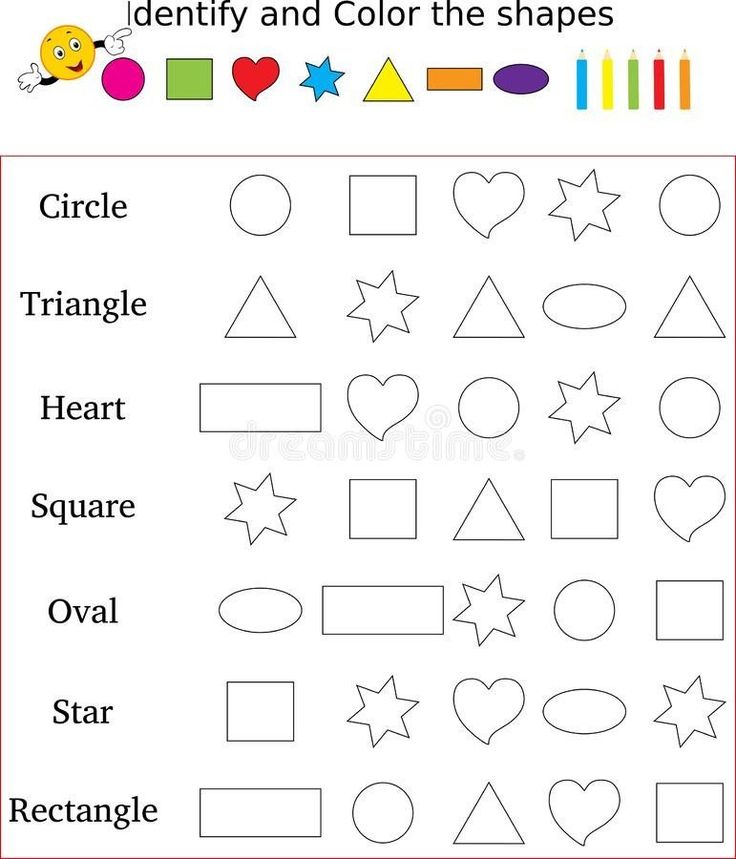 After that, they ask: “Nadi a kitten in green (red, blue, white, yellow, black) slippers. What color will we tie bows to the kittens.
After that, they ask: “Nadi a kitten in green (red, blue, white, yellow, black) slippers. What color will we tie bows to the kittens.
Performance evaluation: similar to the previous task
Task number 3. "Find out the color of the object"
Purpose: to reveal the formation of visual perception of color.
Material: Black and white images of objects that have a constant color (tomato, strawberry, crocodile, Christmas tree, sun, chicken), and colored chips (red, green, yellow).
Conducting the survey (procedure and instructions): Before the start of the study, object pictures familiar to children in black and white and color chips were prepared so that the children would assign its color to each object. The child is shown black and white pictures, which always have a constant color, and it is explained that any color in nature has its own name - the name. Many familiar things are easily recognized by color. The experimenter shows black and white images of objects, the child must name its color and close the picture with the corresponding chip.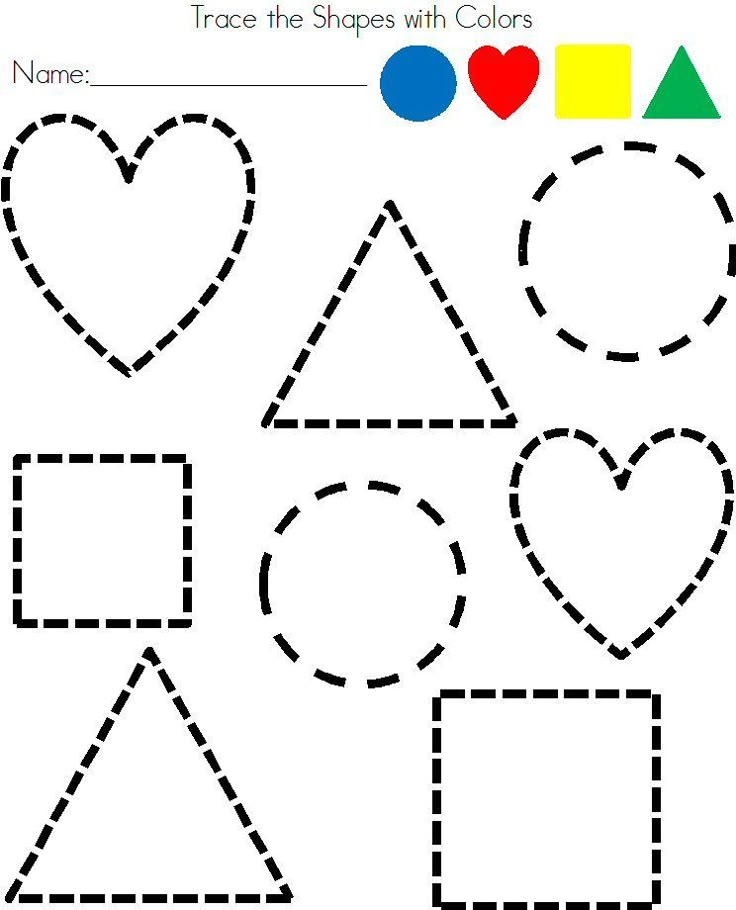
Completion score:
- 3 points - the child accurately performs the task.
- 2 points - the child makes 1-2 mistakes, correctly closes the picture with chips, but makes mistakes in naming the color, self-correction or correction with stimulating help (“think again”) or after training.
- 1 point - the child allows 3-4 in the designation of color both verbally and non-verbally even after training; indifferent to the end result.
- 0 points - the child does not complete the task or performs with numerous errors.
Task number 4. "Pick a pair by color"
Purpose: to study the ability of children to classify primary colors.
Material: colored circles made of thick cardboard and colored sticks; color images of boys and girls dressed in clothes of various colors.
Conducting a survey. First, the child is given multi-colored circles and sticks, and instructions are given to match the stick to the circle of the same color.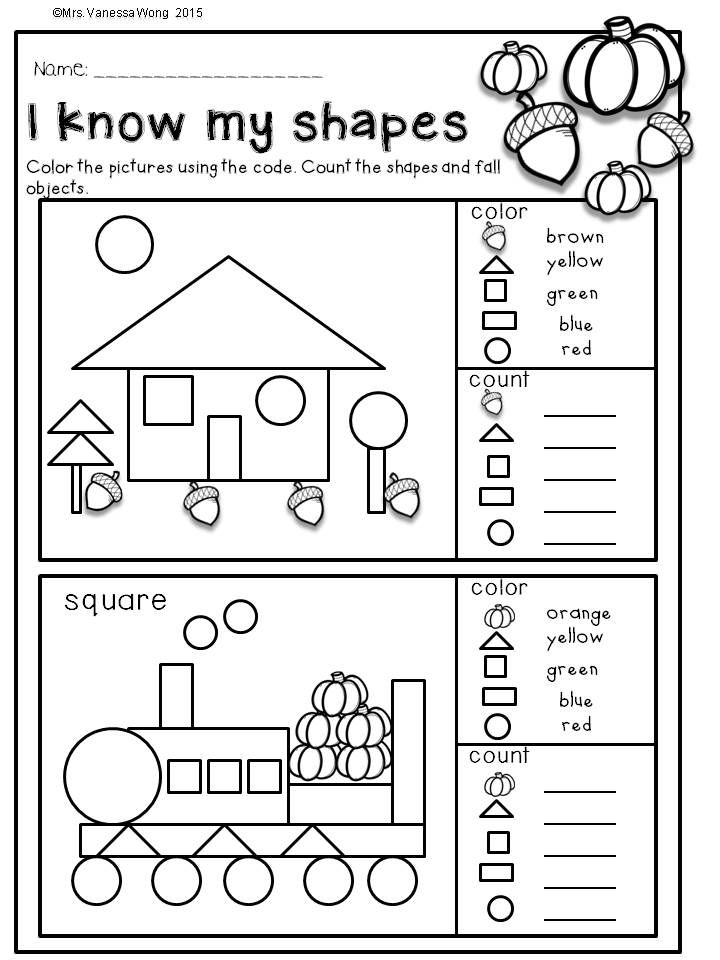 Then the task becomes more difficult. The subject is given mixed cards with the image of girls and boys dressed in clothes of different colors. The child is instructed to choose a pair for the girl to play with so that her clothes match the color of the boy's clothes. For clarity, an example with one card is given. There is no time limit for this task.
Then the task becomes more difficult. The subject is given mixed cards with the image of girls and boys dressed in clothes of different colors. The child is instructed to choose a pair for the girl to play with so that her clothes match the color of the boy's clothes. For clarity, an example with one card is given. There is no time limit for this task.
Performance evaluation: similar to the previous task.
Task number 5. "Colored figures"
Purpose: The task is to find out the patterns of highlighting the key features of color or shape by children in the classification of geometric shapes.
Equipment: colored figures (circle, square, triangle, rectangle) 4 each.
Conducting a survey. All colored figures are laid out in front of the child in random order. First, instructions are given, lay out one form of a different color:
After completing the task, a new instruction is given, to decompose the red figures to red, blue figures to blue, etc.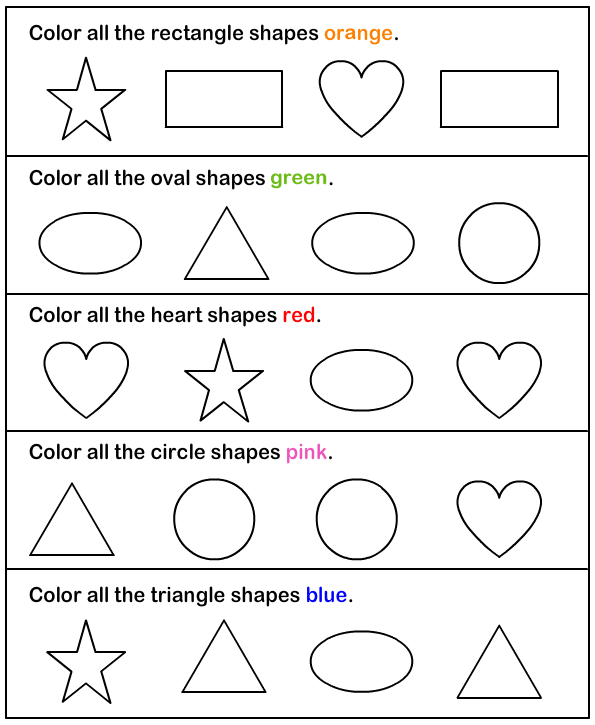
Performance evaluation: similar to the previous task.
Depending on the results of the tasks and the points scored by the children for each task, 3 levels of formation of ideas about color were determined:
- high level - in children who, according to the results of all tasks, scored from 11 to 15 points;
- the average level - in children who, according to the results of all tasks, scored from 7 to 10 points;
- low level - in children who, according to the results of all tasks, scored less than 7 points.
Tasks for studying the formation of ideas about the form in preschoolers.
Task number 1. "Name the figure"
Purpose: to study children's knowledge of basic geometric shapes and the ability to verbally designate them.
Equipment: One-color (red) figures of various shapes (8 pieces): round (ball), square (cube), triangular (cone), rectangular (parallelepiped).
Conducting an examination (procedure and instructions): Four figures of different shapes are placed in front of the child and asked to show the one in the hands of the teacher: “Take the figure the same as mine.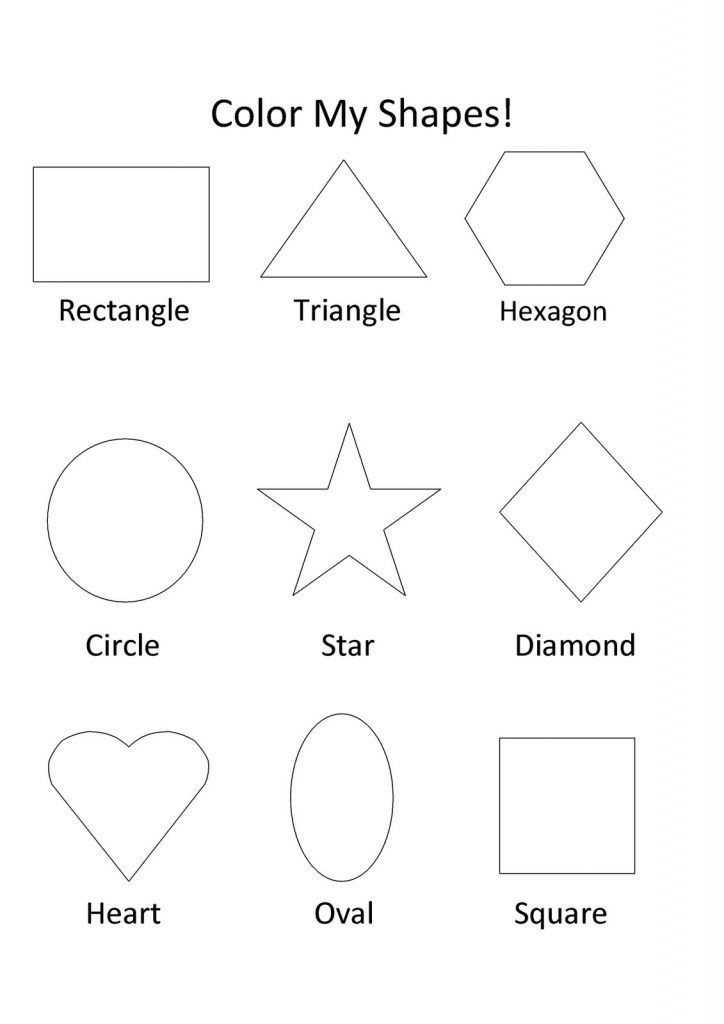 ” Then the teacher asks to show: "Show me where the cube is square, where is the round ball, and now where is the rectangular, triangular figure." Then the experimenter asks the child to name the shape of each figure in turn: “What shape is this figure?”
” Then the teacher asks to show: "Show me where the cube is square, where is the round ball, and now where is the rectangular, triangular figure." Then the experimenter asks the child to name the shape of each figure in turn: “What shape is this figure?”
Completion score:
- 3 points - the child correlates the geometric shape and the geometric body, highlights it by the word; interested in the end result.
- 2 points - the child compares and highlights the form only by the word; shows interest.
- 1 point - the child compares two figures, but does not single out the form by the word even after learning; indifferent to the end result.
- 0 points - the child makes many mistakes, does not distinguish the form even after training.
Task number 2. "Find out the shape of the object"
Purpose: the task is aimed at identifying the formation of visual perception of the form.
Equipment: Black and white images of objects (aquarium, wheel, cabinet, TV, balalaika, Christmas tree, envelope, wardrobe), and chips cut out of cardboard (circle, square, rectangle, square).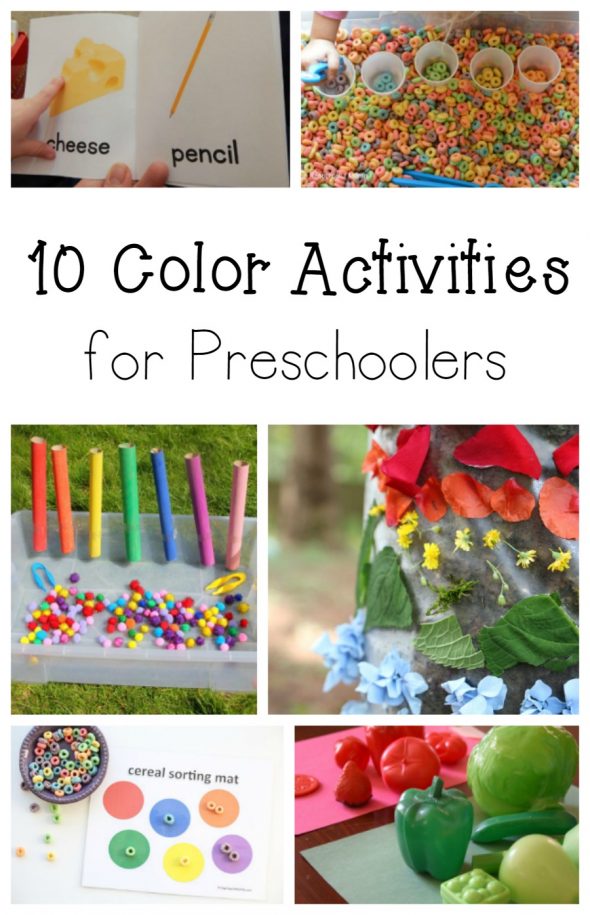
Conducting the survey (procedure and instructions): Before the start of the study, object pictures familiar to children in black and white images and chips were prepared so that the children would lay out its shape for each object. The child is shown images of objects and is given tasks to name its shape and close the picture with the corresponding chip.
Performance evaluation: similar to the previous task.
Task number 3. "Pick a couple in shape"
Purpose: to study the ability of children to classify basic geometric shapes.
Equipment: paired one-color (white) pictures depicting geometric shapes (circle, square, rectangle, square).
Conducting a survey (procedure and instructions): The task is to select paired pictures depicting geometric shapes. The researcher puts 4 pairs of 4 different figures in front of the child and gives instructions to find identical pairs of cards. Then the task becomes more complicated and the child is offered paired pictures depicting two figures of different shapes.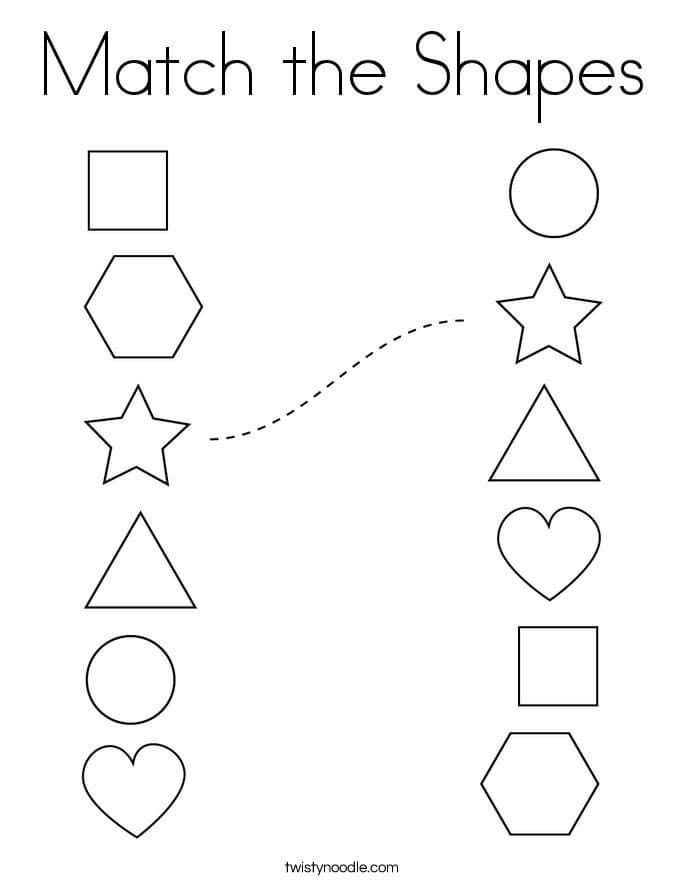 The experimenter gives instructions to find exactly the same card among those laid out on the table.
The experimenter gives instructions to find exactly the same card among those laid out on the table.
Performance evaluation: similar to the previous task.
Task number 4. "Draw the figure"
Purpose: to study the ability of children to independently correlate the shape of an object and apply practical knowledge.
Equipment: pictures depicting unfinished geometric shapes (circle, square, triangle).
Conducting a survey (procedure and instructions): The task is to complete the drawing of incomplete images. The child is offered cards with the image of unfinished contours of triangles, circles, squares and rectangles (different in size), the task for each picture is explained and instructions are given to complete the image. The task execution time is not limited.
Performance evaluation: similar to the previous task.
Task number 5. "Colored jars"
The purpose of the study: to reveal the formation of the perception of the form, the ability to distinguish a planar form from a volumetric one and compare it with a slot.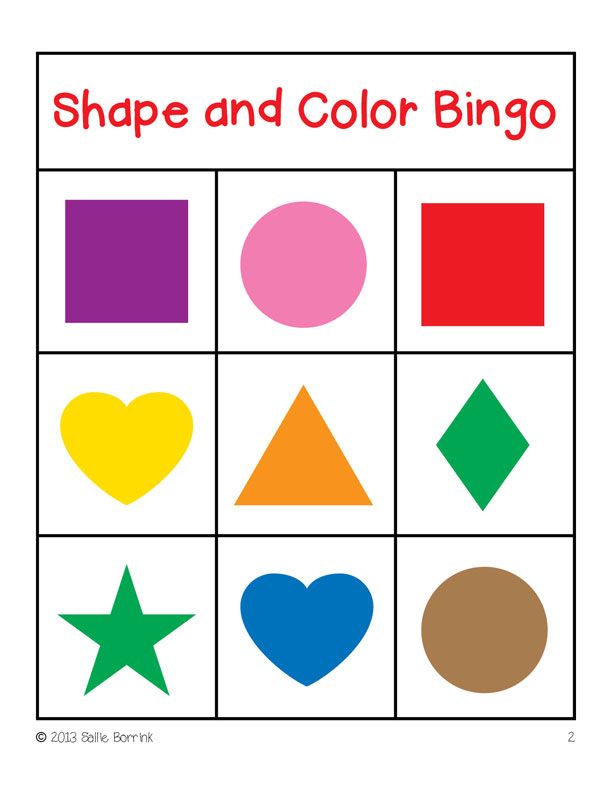
Equipment. Jars with colorful lids. Slots are made in the lid, corresponding in shape to the bases of various three-dimensional geometric bodies.
Conducting an examination (procedure and instructions): geometric shapes are laid out on the table in front of the child. Then the teacher alternately takes and circles the base of the figure, then circles the corresponding slit in the lid of the jar and inserts the figure into the slit. Gesture invites the child to continue. If the child does not understand the task, a verbal instruction is given: "Put all the figures into jars."
Performance evaluation: similar to the previous task
Depending on the results of completing tasks and the points scored by children for each task, 3 levels of formation of ideas about the form were determined:
- high level - in children who, according to the results of all tasks, scored from 11 to 15 points;
- the average level - in children who, according to the results of all tasks, scored from 7 to 10 points;
- low level - in children who, according to the results of all tasks, scored less than 7 points.